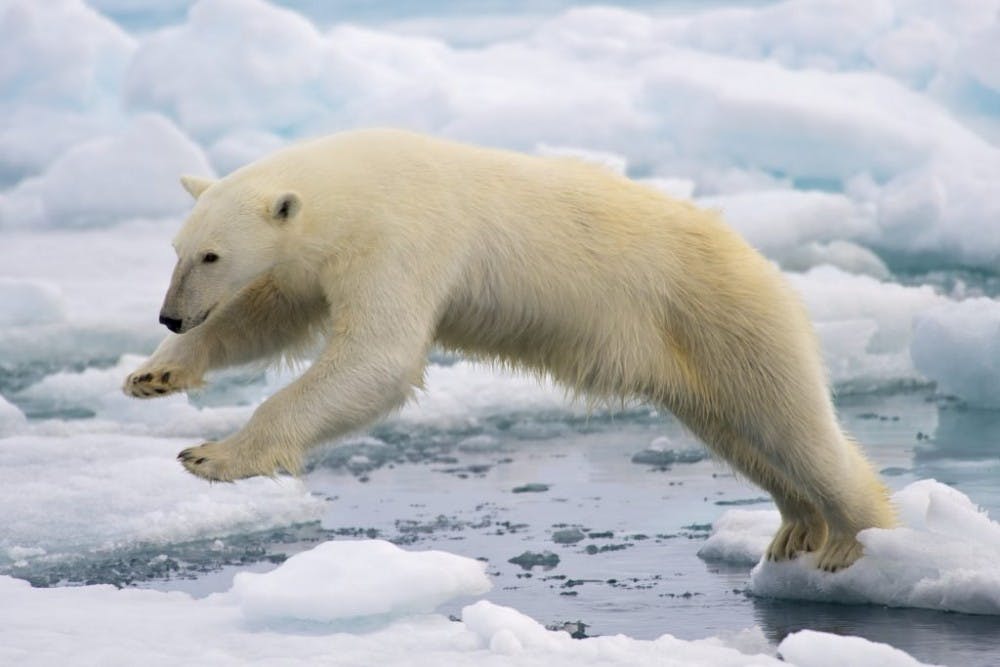Polar bears are the face of climate change. Their image raises awareness for wildlife habitat destruction on poster boards, TV commercials and science textbooks — and for appropriate reasons.
In 2008 polar bears were declared threatened by the U.S. Endangered Species Act because of sea ice loss caused by global warming. As the sea ice of the Arctic melts earlier in the spring and freezes later in the fall, polar bears are losing valuable time on the ice.
Polar bears rely on the presence of ice to hunt their prey. With shorter ice-covered periods, polar bears face intense competition for food, resulting in poor nutrition, reproduction and survival prospects.
From 1979 to 2014, polar bears have lost an average of seven weeks of this hunting time due to sea ice melting from climate change. This trend reducing ice time is expected to continue and affect polar bear populations in the Arctic region.
Climate change affects more than just wildlife. Humans who have lived and hunted on the sea ice for thousands of years are also facing the consequences. Many of these northern communities have a tradition of hunting polar bears, a practice that has cultural, economic and nutritional significance to them.
Previously the indigenous people could easily hunt the bears without negatively affecting the polar bear populations. In fact, polar bear hunting had maintained a healthy number of polar bears in the past by limiting the effect of crowding.
However, in recent years, hunting has combined with drastic habitat loss resulting in strained polar bear populations. Although the current legal polar bear hunt is limited to between 600 and 800 bears annually (about three or four percent of the total population), this is considered sustainable only in some areas during some years.
Habitat loss makes it difficult to predict the changes in polar bear populations from year to year and thus to determine how to maintain sustainable hunting practices.
In response researchers at the University of Washington and the U.S. Fish and Wildlife Service investigated how habitat loss and hunting interact to affect polar bear populations. They use an improved model of how polar bear populations function and change to determine how hunting can avoid exacerbating the negative effects of habitat loss.
Polar bears are divided into 19 subpopulations across the Arctic. This makes modeling polar bear populations more difficult because regional variation in climate conditions causes some subpopulations to be more stable than others.
Even so, the lead author of the study, Eric Regehr, explains that it may be possible identify what percentage of the polar bear population could be hunted without unduly accelerating overall population declines caused by loss of habitat.
By combining the current polar bear population model with predictions for sea ice coverage in the coming years, researchers can show that, with careful planning, hunting can indeed continue without putting polar bear populations at risk. The key is to monitor each subpopulation as the climate shifts.
Regularly conducting studies and gathering observations about the populations can allow scientists to adjust the amount of harvest in response to changing environmental conditions.
The frequency of the population assessments would depend on the rate of change of the climate. If the environment changes quickly, it is essential to increase the frequency of population checks. Regehr explained that this will ensure that hunting allowances do not become outdated and overly harmful.
Regehr’s work and that of many other researchers at universities and government agencies across the nation continue to aim to protect not only wildlife on the sea ice, but also keep alive the traditions of people who have lived there for thousands of years.

















